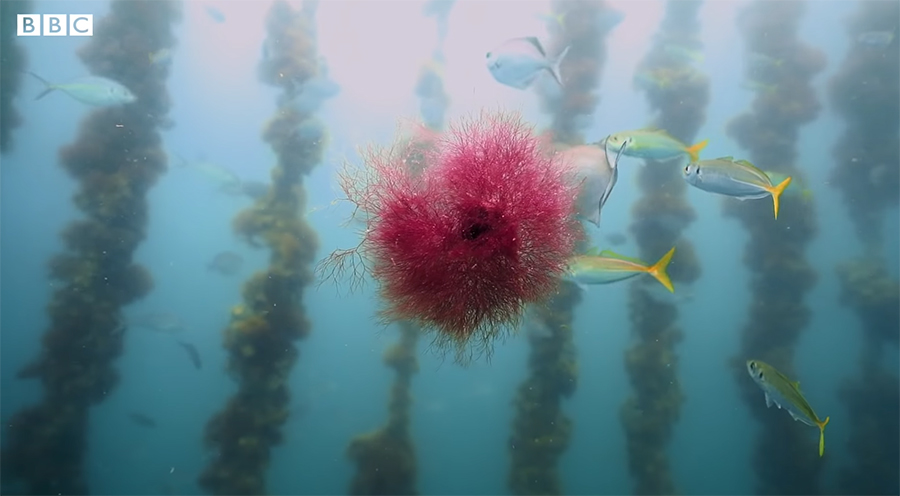“Kelp is a type of macroalgae or seaweed,” explains marine scientist and kelp farmer Jo Lane. “And there are three main types of seaweed—red, brown, and green—and the kelps are a type of brown.” In this BBC Earth Science video, she and marine ecologist Dr. Pia Winberg explain the incredible power of seaweed, a vital planetary resource.
“So in order to tackle climate change, we need to reduce the amount of carbon dioxide going into the atmosphere, and we also need to look at ways of drawing down that carbon dioxide. Kelp growing so quickly absorbs and sequesters a huge amount of carbon dioxide.”


“So the cycling of carbon through the capture of carbon dioxide and growing crops faster in seawater than on land is one important way we can reduce our carbon emissions…
“…even just a 0% replacement of seaweed in wheat production or meat production in foods would have a major impact.”

Kelp farming is both restorative and regenerative, battling carbon building and potentially offsetting ocean acidification if enough is produced. But seaweed is a powerful tool in other ways, as well: It improves the health of its ecosystems, and it can be used as food, plastic, biofuel, and more.


File under innovation and natural climate solutions. Watch these seaweed videos next:
• When Your Job Is Saving The Ocean
• Underwater farms vs. climate change?
• Preserving the Forest of the Sea
• The Ooho edible water bottle, a V&A Object in Focus
• Otters wrap themselves in kelp for safety
• Foraging Seaweed: Harvesting a French Coastal Superfood
Bonus: How can nature be used as a tool to restore ecosystems?
Curated, kid-friendly, independently-published. Support this mission by becoming a sustaining member today.

